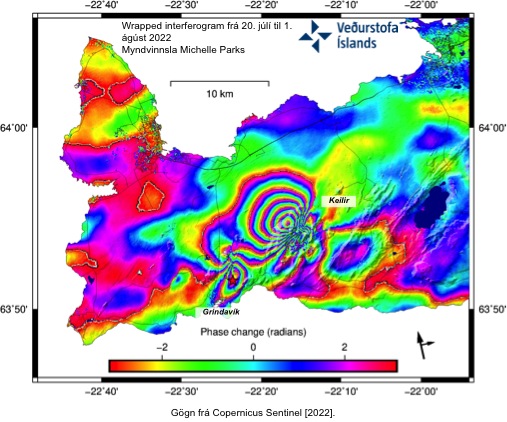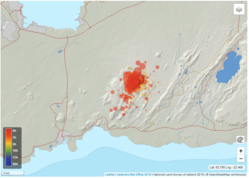Status of unrest in Reykjanes
Preliminary deformation modelling results suggest the top depth of the new dike intrusion beneath Fagradalsfjall is very shallow - about 1 km. The magma inflow rate is rapid, almost double that observed during the first dike intrusion in february-march 2021. There are indications that the deformation and seismicity is declining and this was precursory to the eruption which started on 19th March 2021. Considering all of the above, the likelihood of an eruption at Fagradalsfjall within the coming days is considered to be substantial.

Sentinel-1 interferogram spanning 20 July to 1 August 2022 showing new dike intrusion on Reykjanes Peninsula and deformation associated with the M5.47 earthquake on 31 July 2022. Coloured fringes show ground deformation in the satellite's line-of-sight, related to the new dike intrusion beneath Fagradalsfjall which commenced on the 30th July 2022. The interferogram shows approximately 16 cm of northwestward displacement related to the intrusion.




